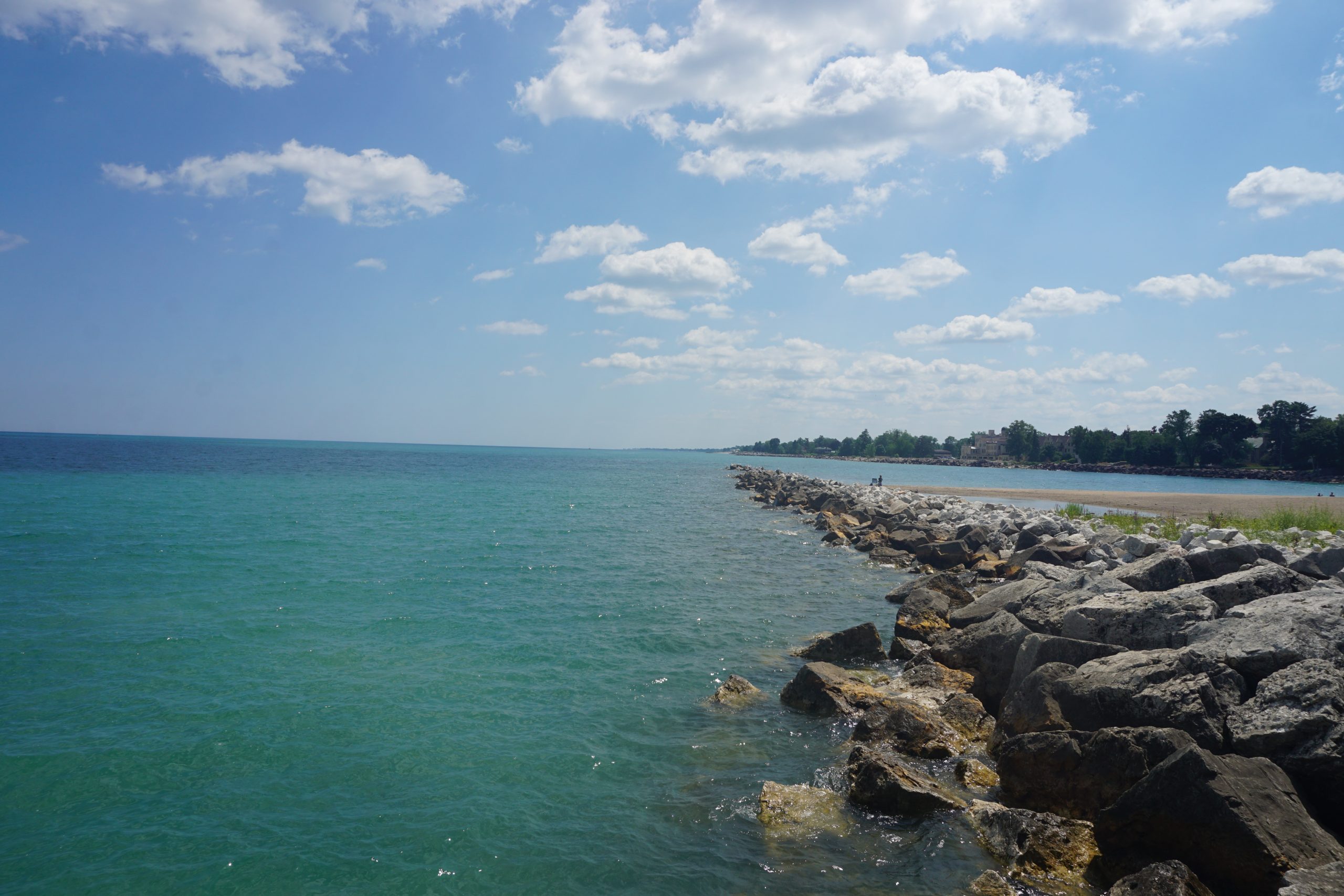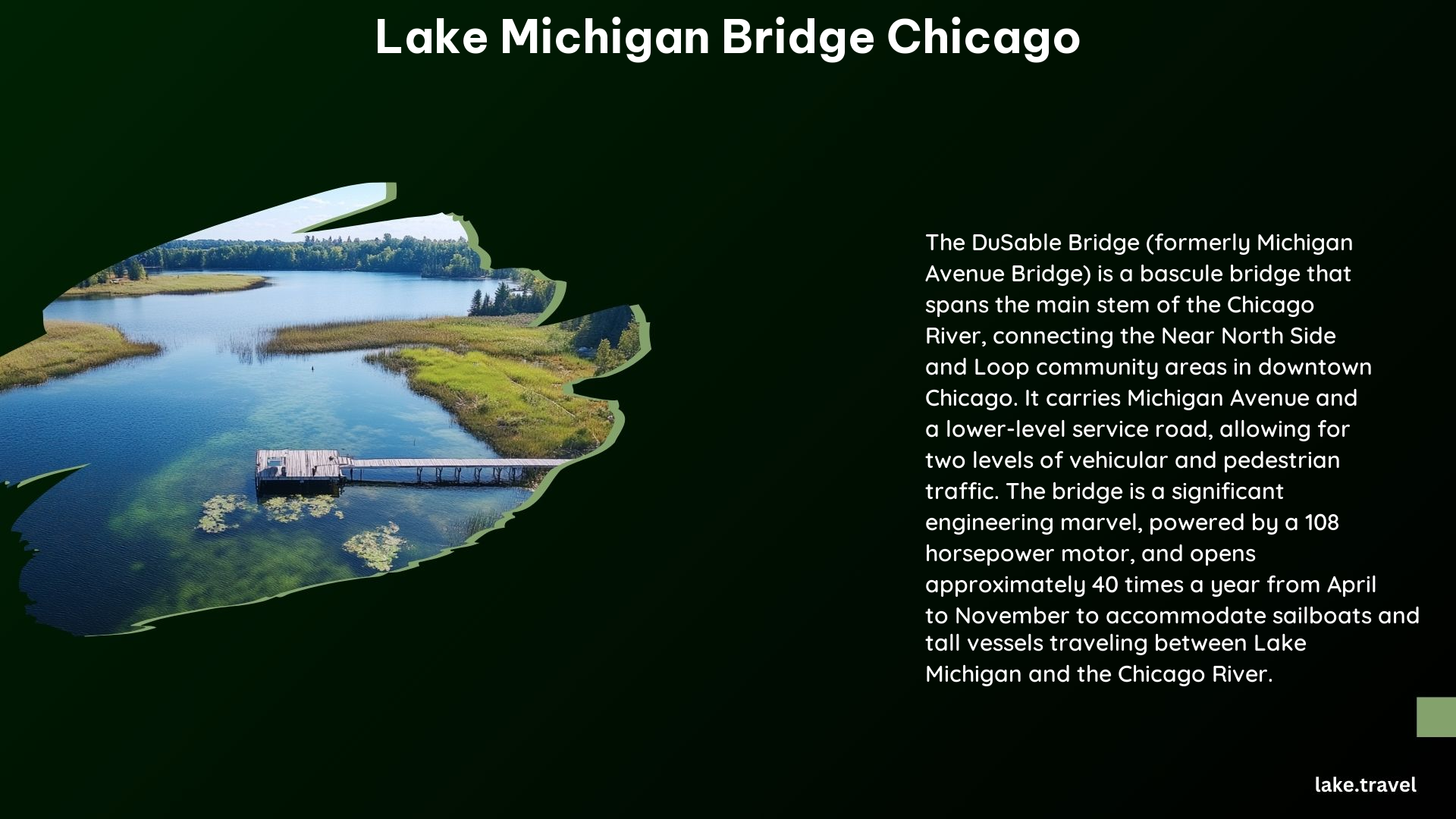The DuSable Bridge, formerly known as the Michigan Avenue Bridge, is a iconic landmark in Chicago, Illinois, spanning the main stem of the Chicago River between the Near North Side and Loop community areas. This Beaux Arts-style bascule bridge, constructed between 1918 and 1920, has played a significant role in the city’s history and continues to be an important transportation hub and tourist attraction.
Clearance Height and Boat Traffic

As a bascule bridge, the DuSable Bridge can be raised to allow tall ships and boats to pass underneath, facilitating the movement of watercraft between Lake Michigan and the Chicago River. While the exact clearance height is not explicitly stated, the bridge opens approximately 40 times a year from April to November to accommodate sailboats and other tall vessels.
| Clearance Height | Frequency of Bridge Openings |
|---|---|
| Not explicitly stated | Approximately 40 times per year (April to November) |
This ability to raise the bridge allows for the continued use of the Chicago River as a vital transportation route, connecting the city’s waterways to the Great Lakes and beyond.
Significance and History

The DuSable Bridge holds significant historical importance, as it is situated in an area that was once the homestead of Jean Baptiste Point du Sable, considered the first permanent non-indigenous settler of Chicago. The bridge was renamed in 2010 to honor this pioneering figure, recognizing his contributions to the city’s early development.
Design and Construction
The bridge was designed in the Beaux Arts style, a popular architectural movement in the late 19th and early 20th centuries that emphasized symmetry, ornate decoration, and grand, imposing structures. Construction on the bridge began in 1918 and was completed in 1920, with the decorative work being finalized in 1928.
The DuSable Bridge is a fixed trunnion bascule bridge, also known as a “Chicago style bascule bridge.” This design features two double-deck leaves that carry both Michigan Avenue and a lower-level service road over the river, allowing for two levels of vehicular and pedestrian traffic.
Infrastructure
The bridge’s unique infrastructure allows for efficient transportation and access to the city’s waterways. The two-level design, with Michigan Avenue and a lower-level service road, provides ample space for both vehicular and pedestrian traffic to cross the river. The bascule mechanism enables the bridge to be raised, facilitating the passage of tall ships and boats.
Visitor Information
For those interested in witnessing the bridge’s impressive opening mechanism, the McCormick Bridgehouse & Chicago River Museum offers visitors the opportunity to observe the bridge lifts. Tickets and schedules for these events can be found on the museum’s website.
The DuSable Bridge is located in a prime location, spanning the main stem of the Chicago River between the Near North Side and Loop community areas. This strategic placement allows the bridge to serve as a vital transportation link, connecting various neighborhoods and attractions within the city.
Additional Facts
The DuSable Bridge has been recognized for its historical and architectural significance. It is included in the Michigan–Wacker Historic District and has been designated as a Chicago Landmark, highlighting its importance as a cherished part of the city’s landscape.
Beyond its transportation function, the Chicago River system, which the DuSable Bridge crosses, is home to a diverse array of wildlife. Over 70 species of fish, 60 species of birds, and various other aquatic and terrestrial creatures can be found in this urban waterway, adding to the bridge’s environmental significance.
References
- https://en.wikipedia.org/wiki/DuSable_Bridge
- https://www.bridgehousemuseum.org/bridge-lifts
- https://www.architecture.org/learn/resources/buildings-of-chicago/building/michigan-avenue-bridge-dusable-bridge/
- https://www.iiseagrant.org/chicagowaterwalk/cww5_rtcr_mab_getstarted.html
